When I heard about Skull Island for the first time, I was more than just a little bit intrigued, but mainly because of its mysterious and nebulous name. What skulls were there and why I wondered?
And so, when we ventured to the South Pacific recently, we made sure that a visit to Skull Island was on the list, located in the middle of nowhere in the Vona Vona Lagoon in the Solomon Islands.
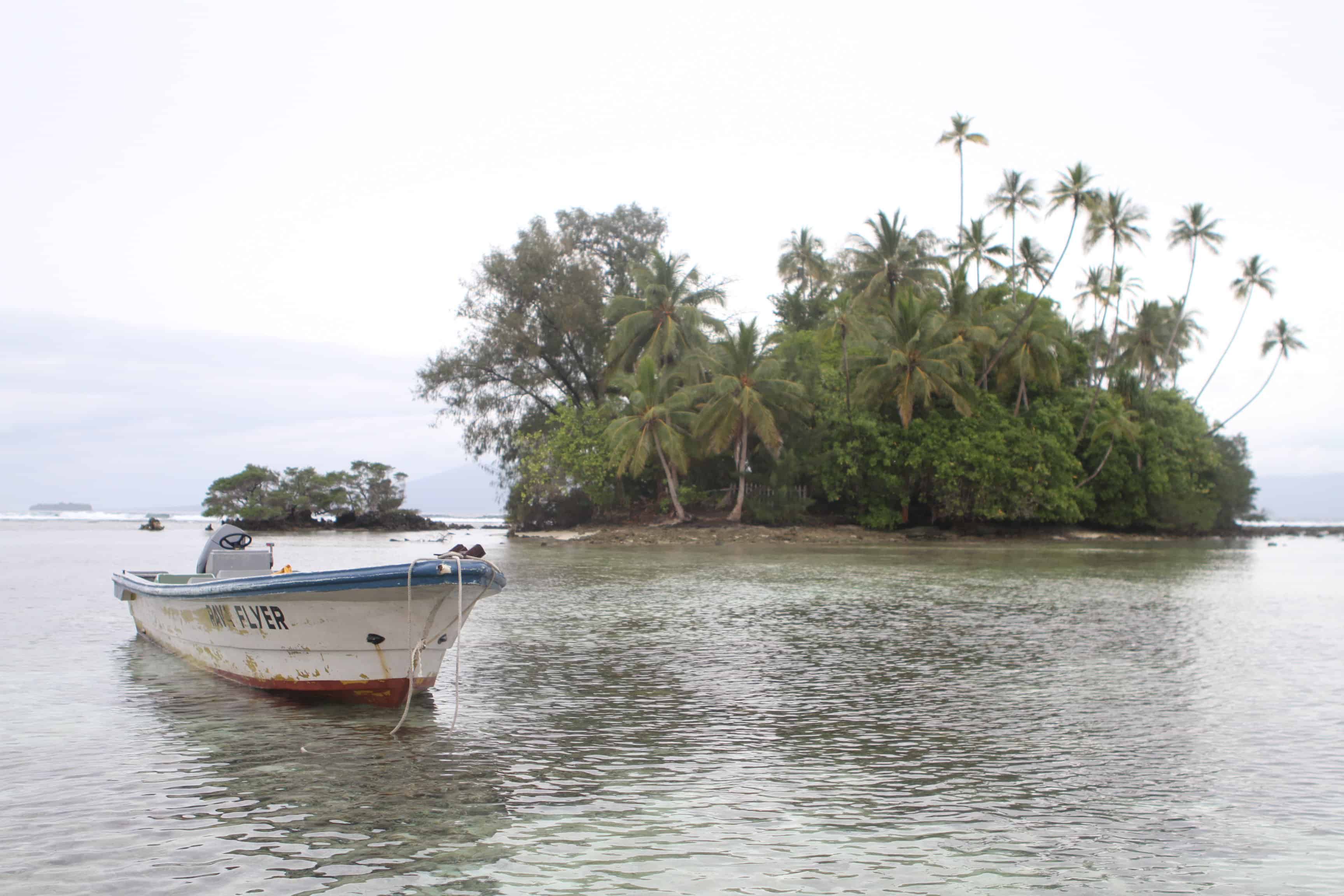
Anchoring our boat close to Skull Island — we made it the rest of the way by foot
Getting to Skull Island
To get to Skull Island, you need to head to the small town of Munda first (we stayed at the Agnes Hotel, which is also home to Dive Munda — if you’re an avid diver, this is a must stop). From there, one of the locals who attend to the island will take you out to this tiny islet on the Vona Vona Lagoon on a banana boat.
It takes around a half an hour to get there depending on the weather and waves and you could jump in for a swim anywhere along the way. There’s plenty to see and you can also go snorkeling off one of the many nearby islands.
Despite the name and headhunting history, we feared not and headed to Skull Island as soon as we arrived in Munda. It is meant to be the final resting place for the skulls of many vanquished warriors, all of whom were killed back around the time of World War I and beyond. On-site, there is a shrine for the skulls of Rendovan chiefs which some locals still pray to and ask for assistance, especially for luck with fishing. Note that headhunting was also prominent in Papua New Guinea as well around the same time.
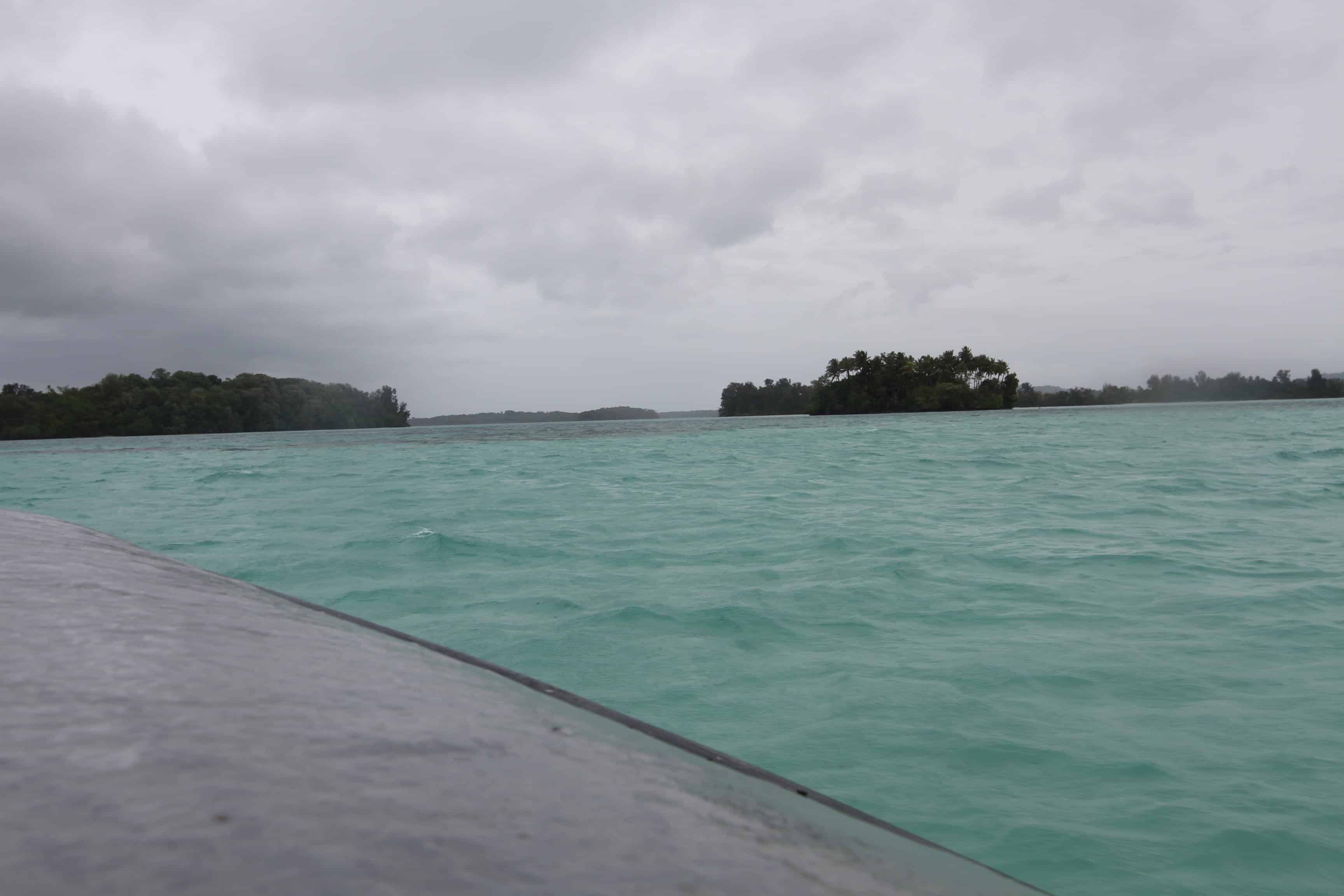
Blue waters leading up to Skull Island
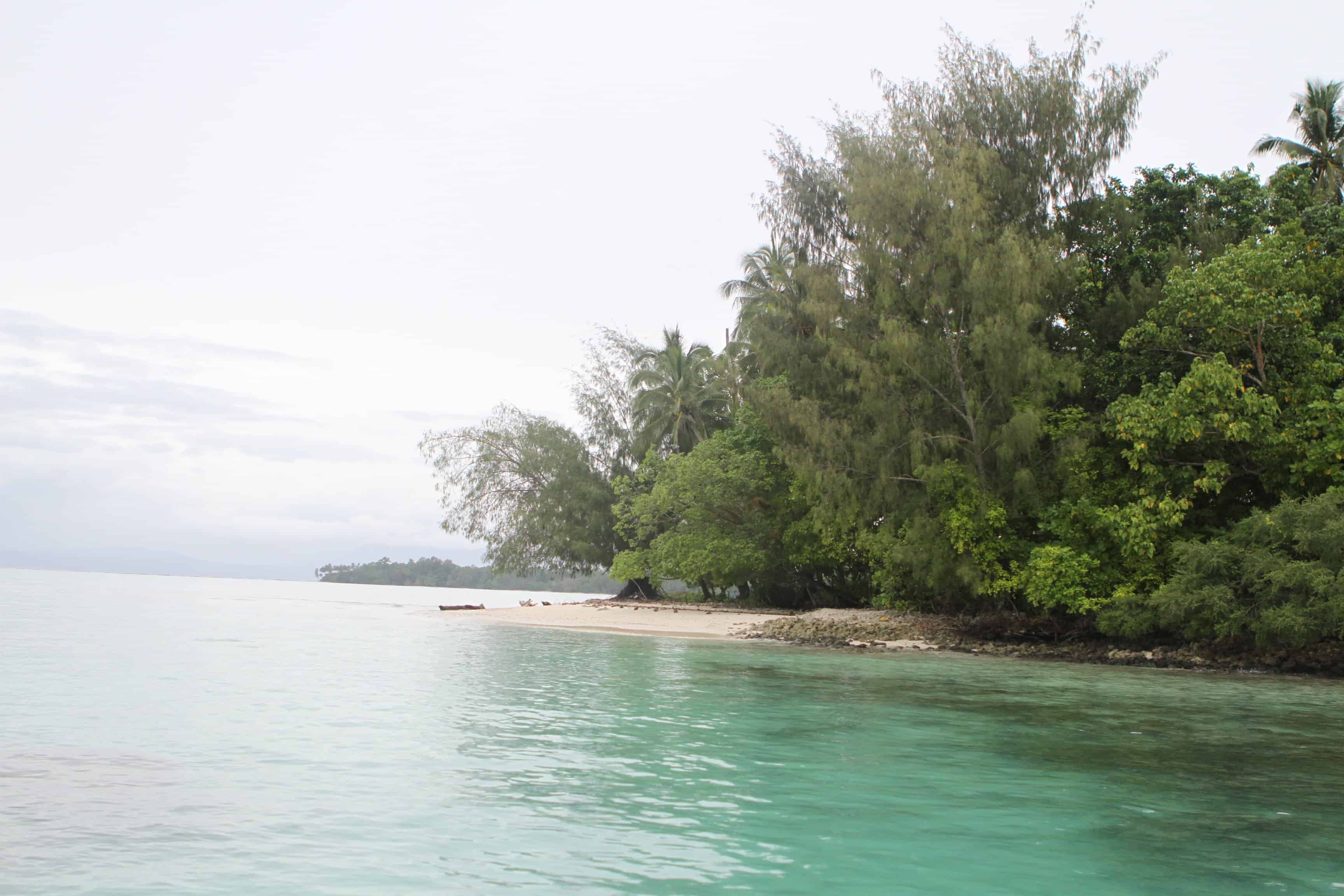
Skull Island: there she is in the yonder — above and below.
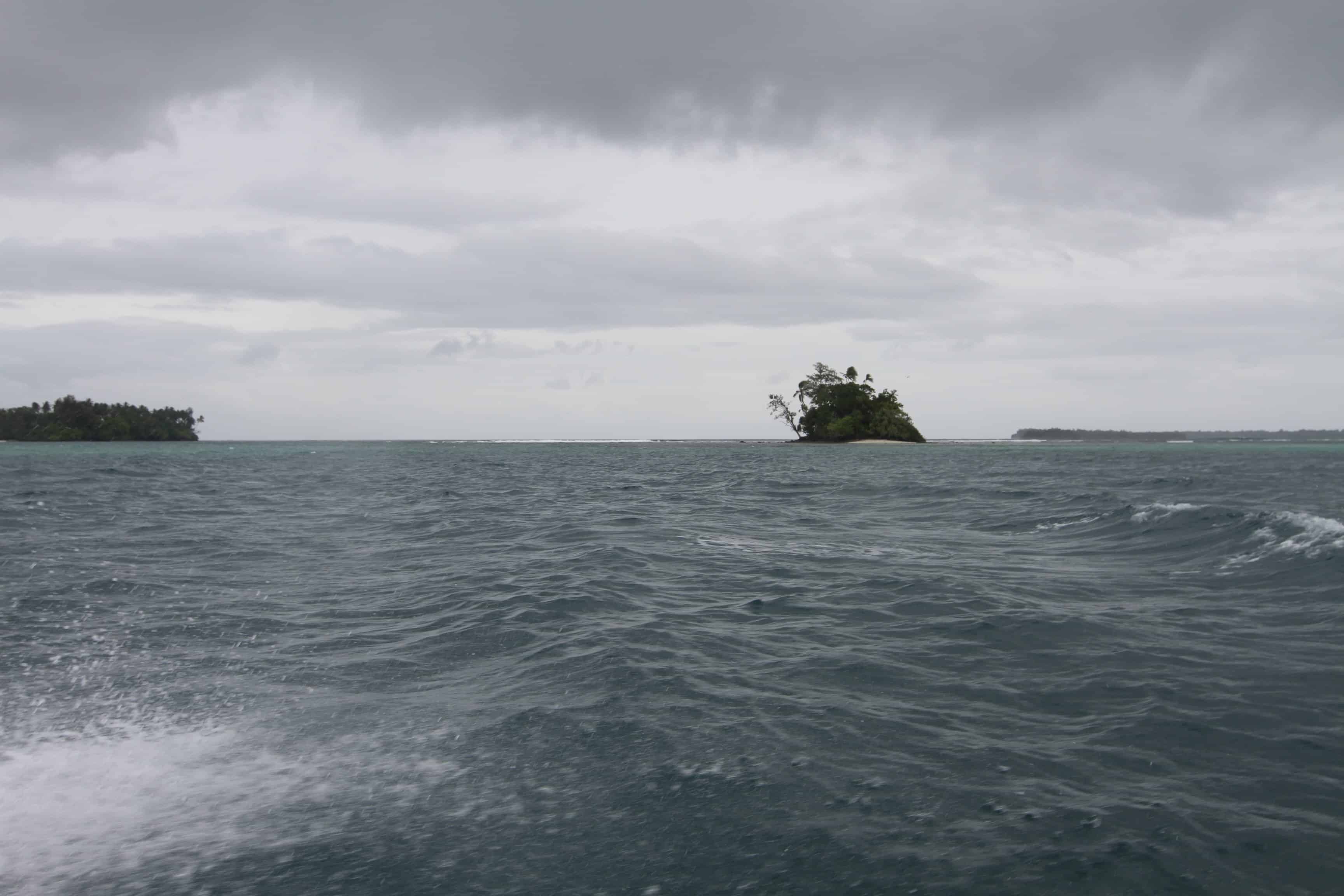
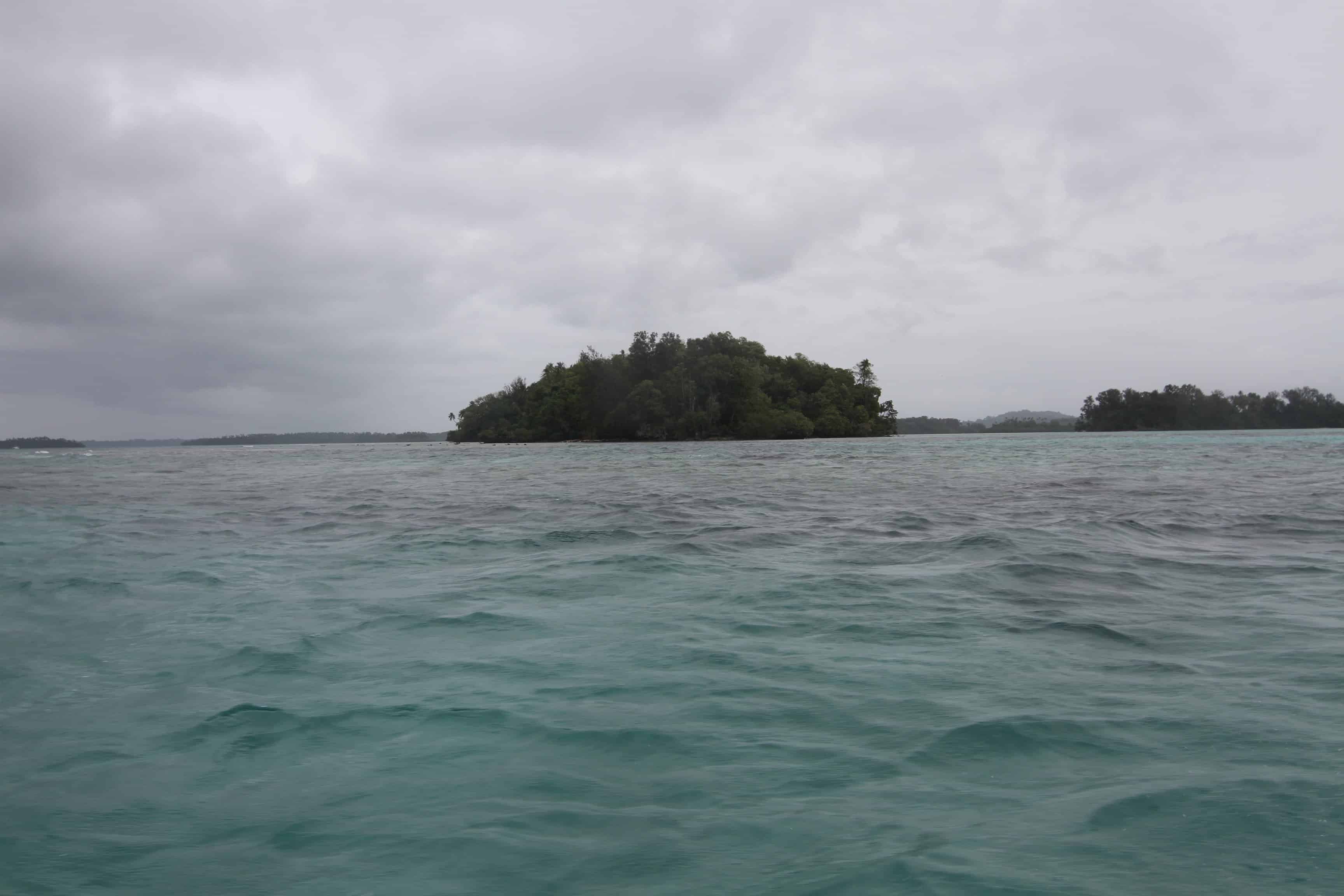
The History of Skull Island
The truth is that there’s a lot more involved in the history and culture of Skull Island than you’ll find in most travel articles.
Said to be done from around 1860 to the early 1900’s, headhunting was a ritual that yielded you power and authority from the Chief and this was done by acquiring skulls as trophies –- some say it was a sign that their ancestors were by their sides and supported them.
The ritual was said to be part of religious practices which bound together the living and the dead. Story has it that headhunting evolved as a form of ritualized warfare around the same time as trading. We also heard that some communities built watch-houses high in trees so you could see the so called “raids” coming from Rendova, Vella Lavella and Marovo Lagoon, the latter of which is known for great snorkeling and diving today.
History also has it that revenge was done by assassins who were hired to kill rival warriors and destroy entire villages. Can you imagine? Headhunting was apparently carried out on other islands as well but this region is where it is most known and stories were passed down verbally. We learned about this from grandchildren of those who lost fathers and grandfathers in these raids or participated in the rituals, one of whom was our guide to Skull Island.
Go to Skull Island with a Guide
On-site at the Agnes Hotel, Sunga and Silliun are two guides who can take you over to Skull Island. You see, not anyone can bring people there, or at least it isn’t a good idea. We don’t know if people go to the island unattended, but there’s a sacred reason why you should only go with a guide.
Many of the skulls have been removed over the years, so only a portion of them can still be found there. Because of their history, these guides talk to the deceased spirits who still live on the island before visitors enter. Why is this done and why is it important?
In one word: RESPECT. Asking the spirits who remain if it is okay to visit is done from a place of respect, dignity and honor for the tragedies which took place there in the early 1900’s which have left scars and haunting memories on many families in the Roviana area.
As you approach the island, it doesn’t look much different than many of the other small islands in the area, but there’s much trauma rooted into its soil.
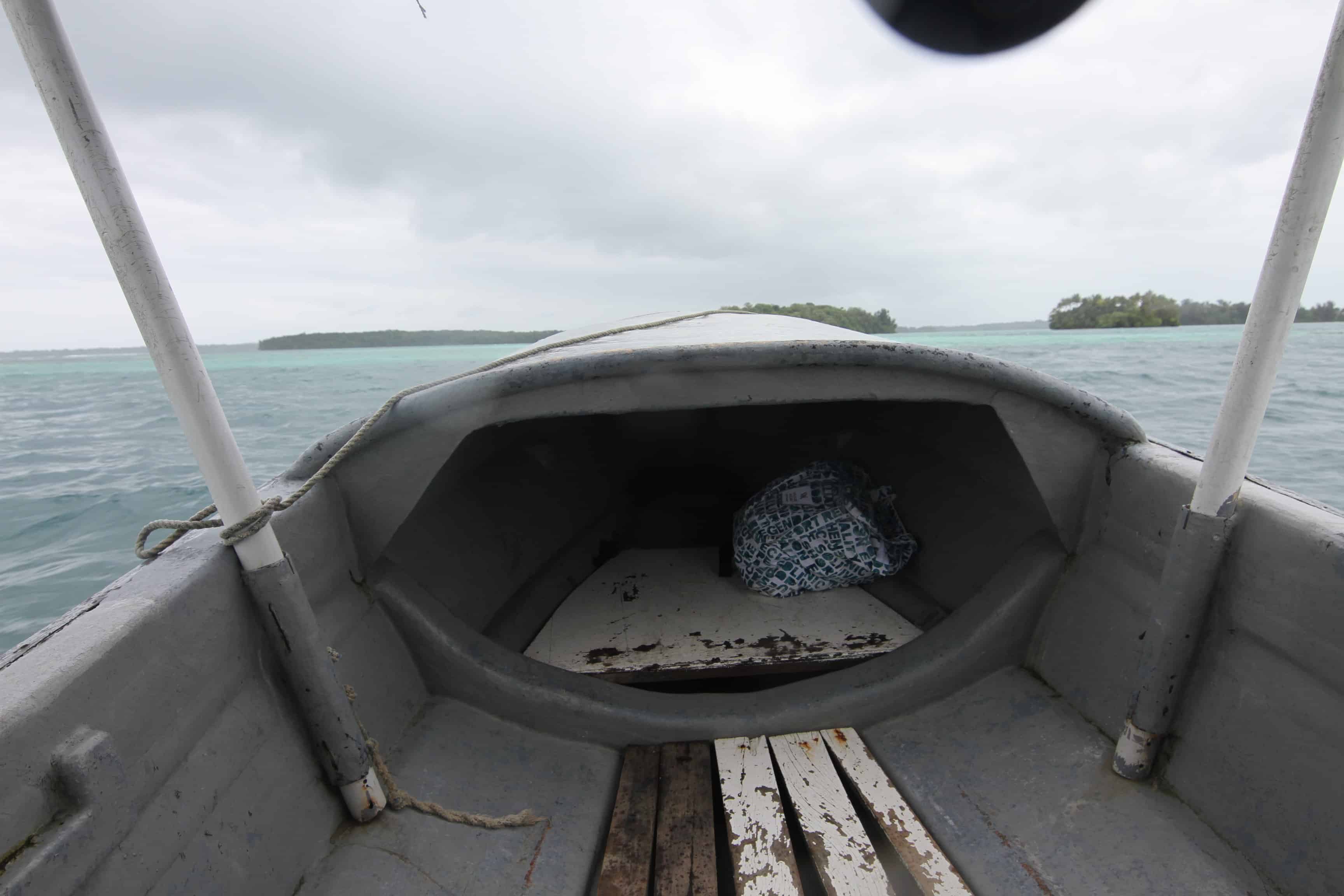
Approaching Skull Island by Banana Boat above and below
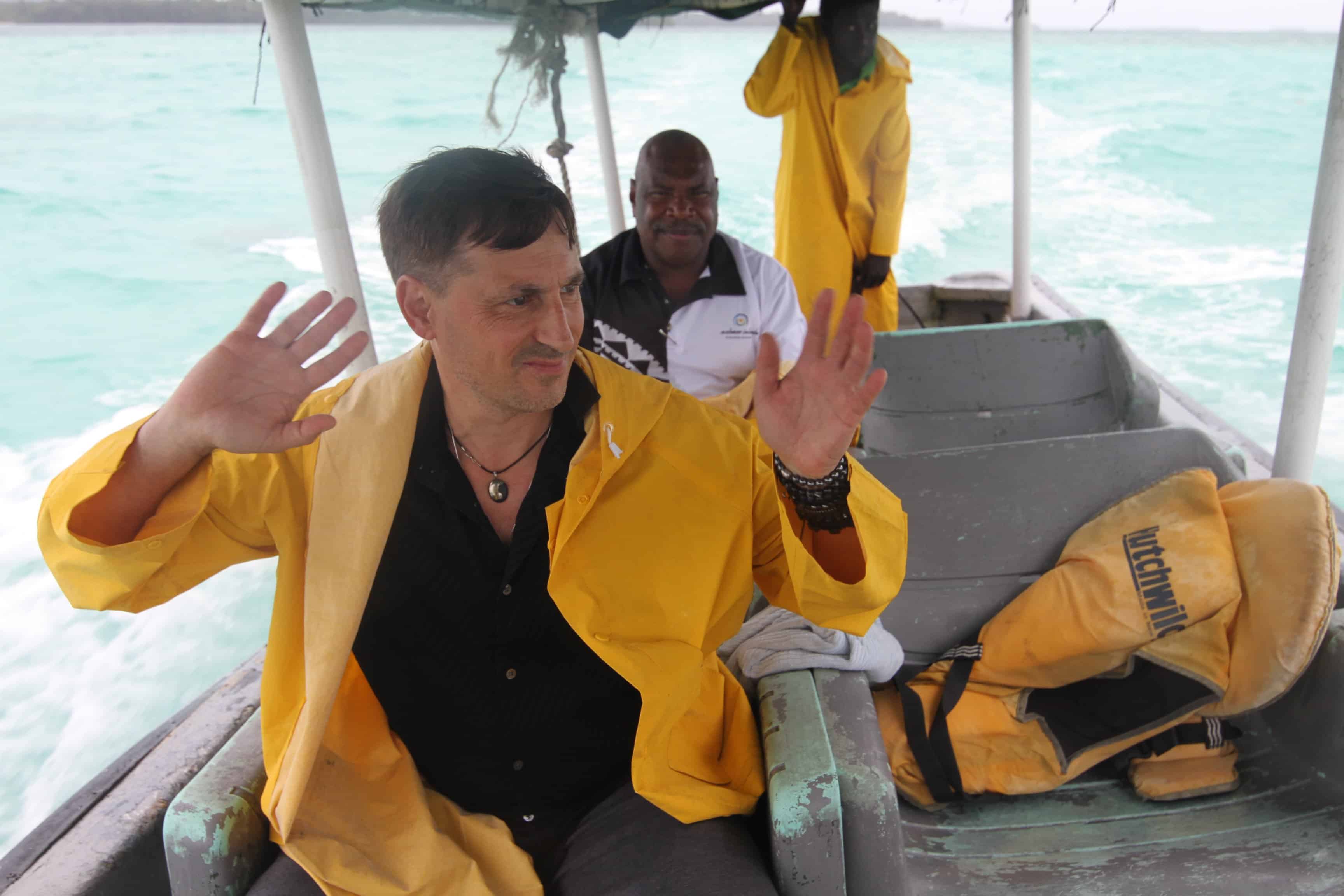
Our banana boat to Skull Island
Because it is fairly shallow around the island, you need to walk in by foot as the boat cannot pull all the way up to the shore.
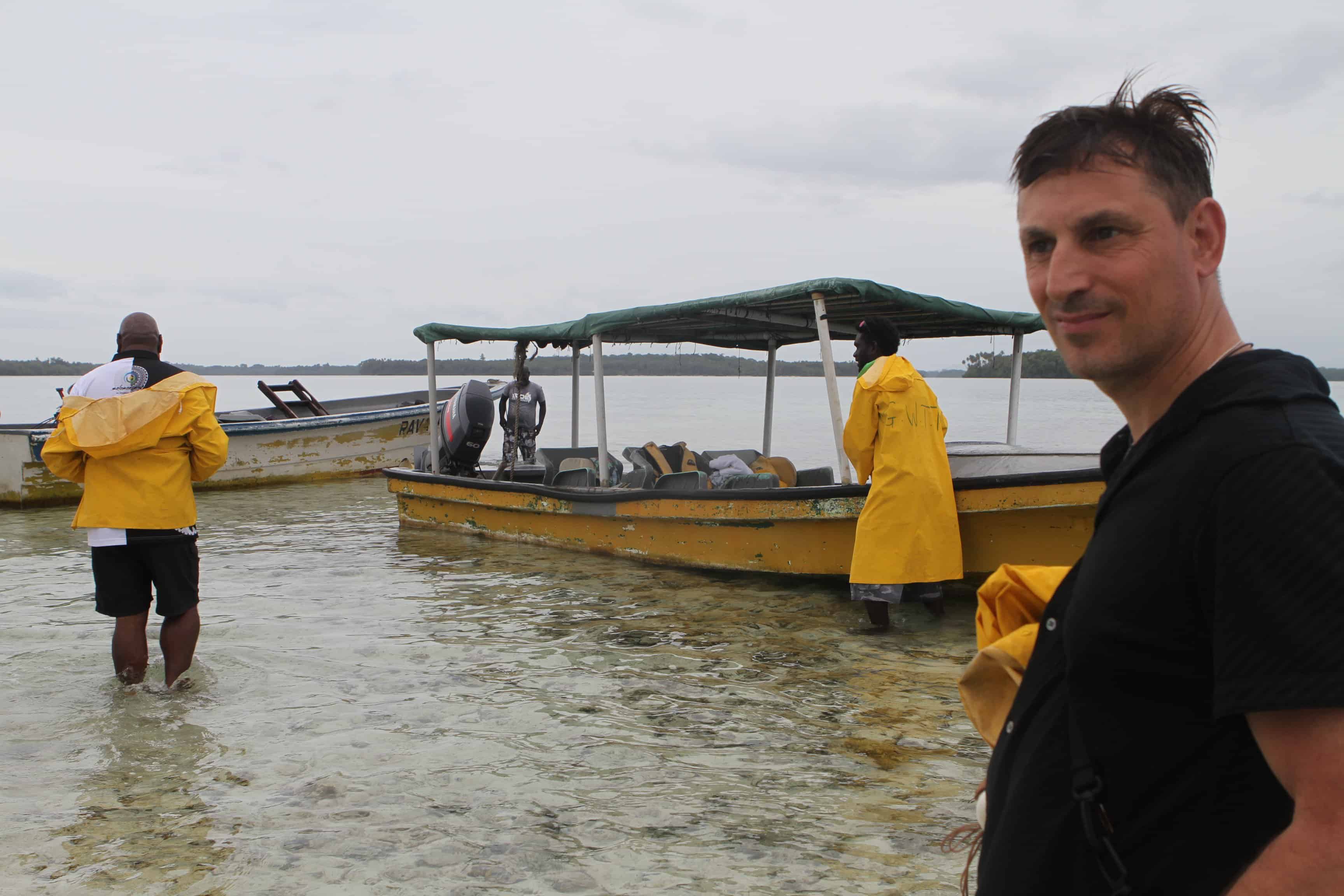
The boat moored a bit further out and then we headed in by foot
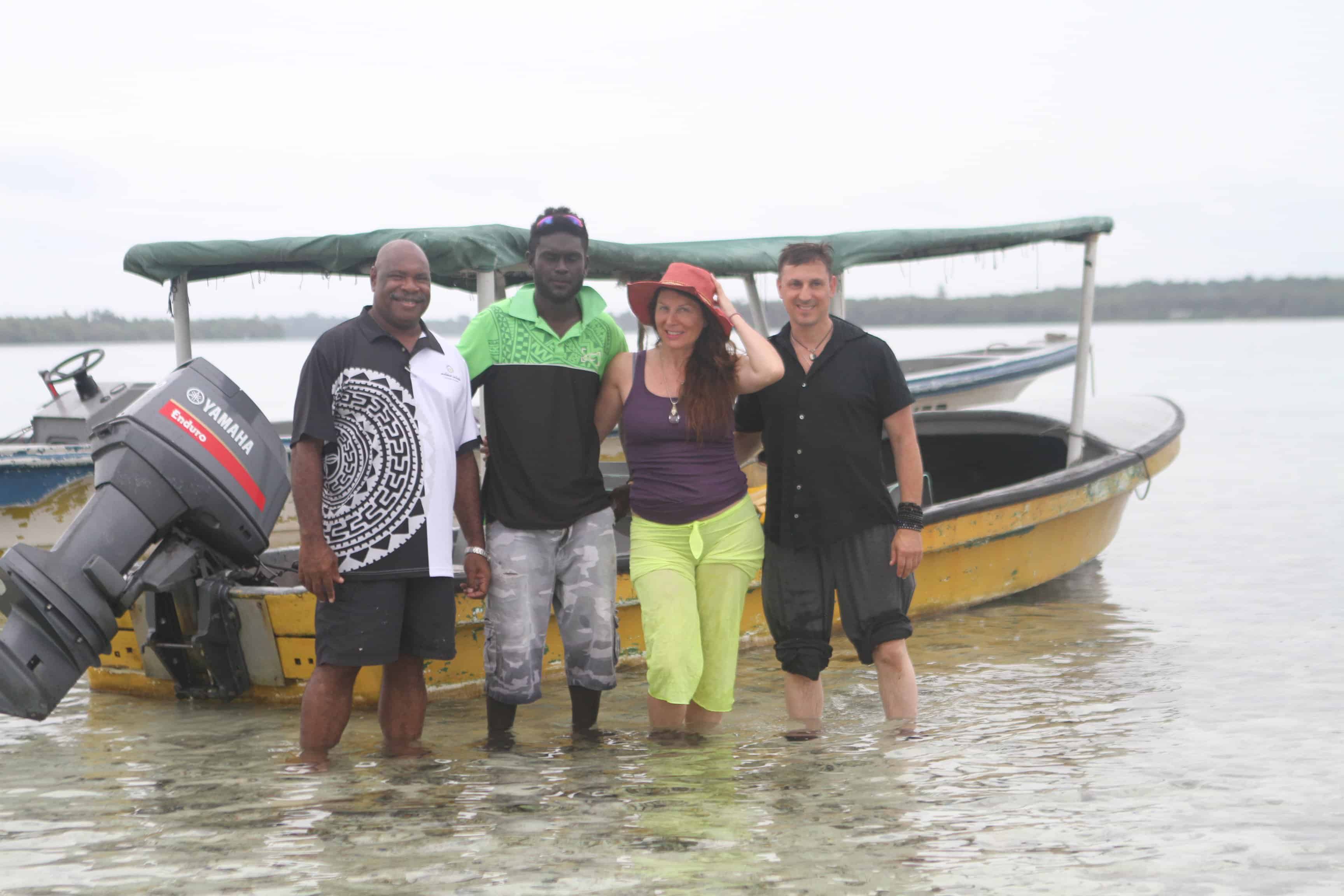
Left to right: Ellison (our host and Director of the Solomon Islands Tourism Board, Silliun, our guide, Renee and Anthony

Venturing by foot to Skull Island from the boat
Once we arrived on the island itself, Silliun went to the gate first to ask permission and alert the spirits that we were coming. In this way, there is a guide they are connected to, which means they (aka the spirits) will trust who comes onto the island. Going with a guide not only shows respect to the spirits on the island, but protects you.
Below, Anthony approaches the gate.
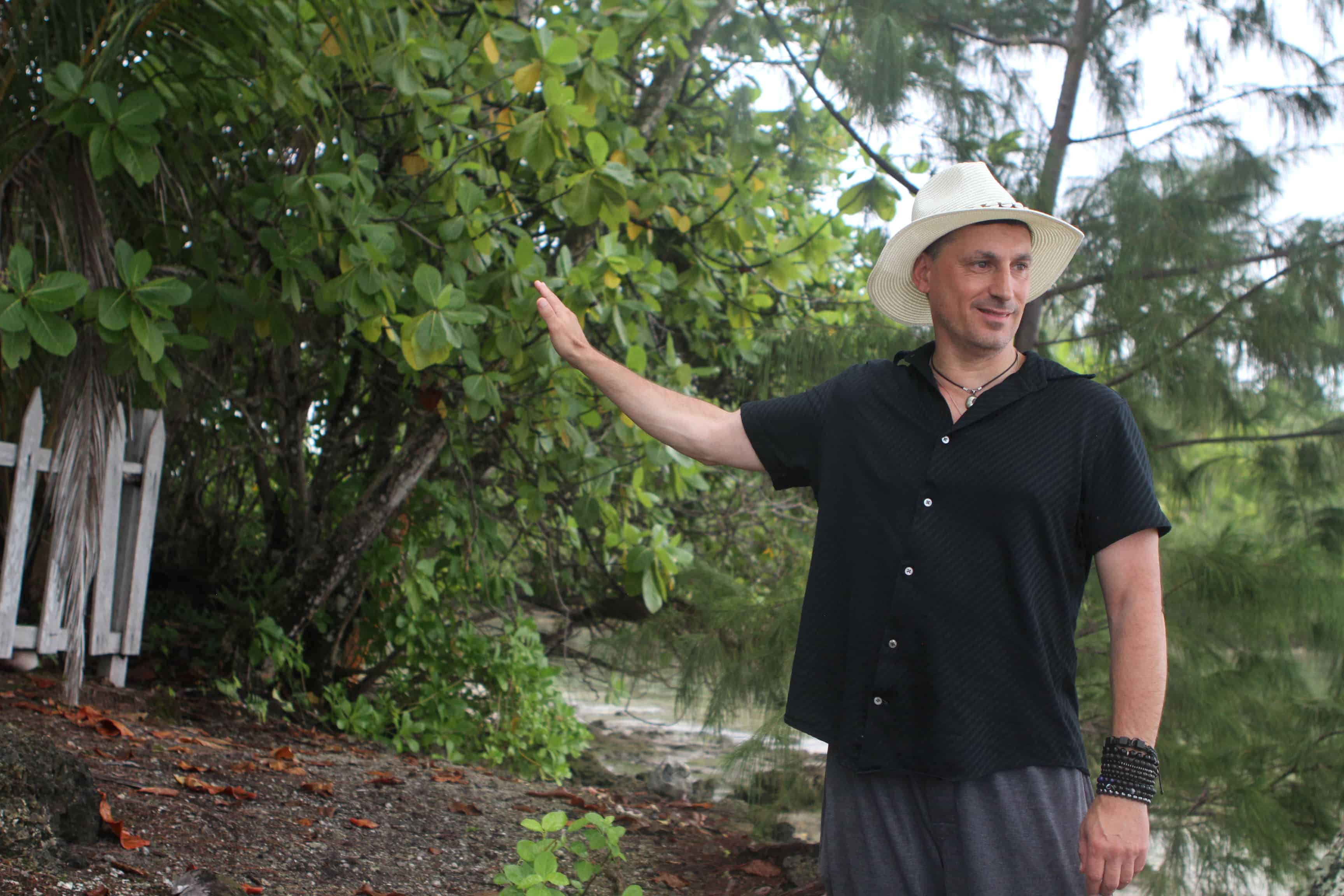
Approaching the weathered wooden gate of Skull Island
Inside Skull Island
The skull shrines are also decorated with traditional shell money. While skulls have gone missing over the years, protectors such as our guides Silliun and Sunga are there to minimize the risk of theft and to maintain respect for the spirits who remain here.
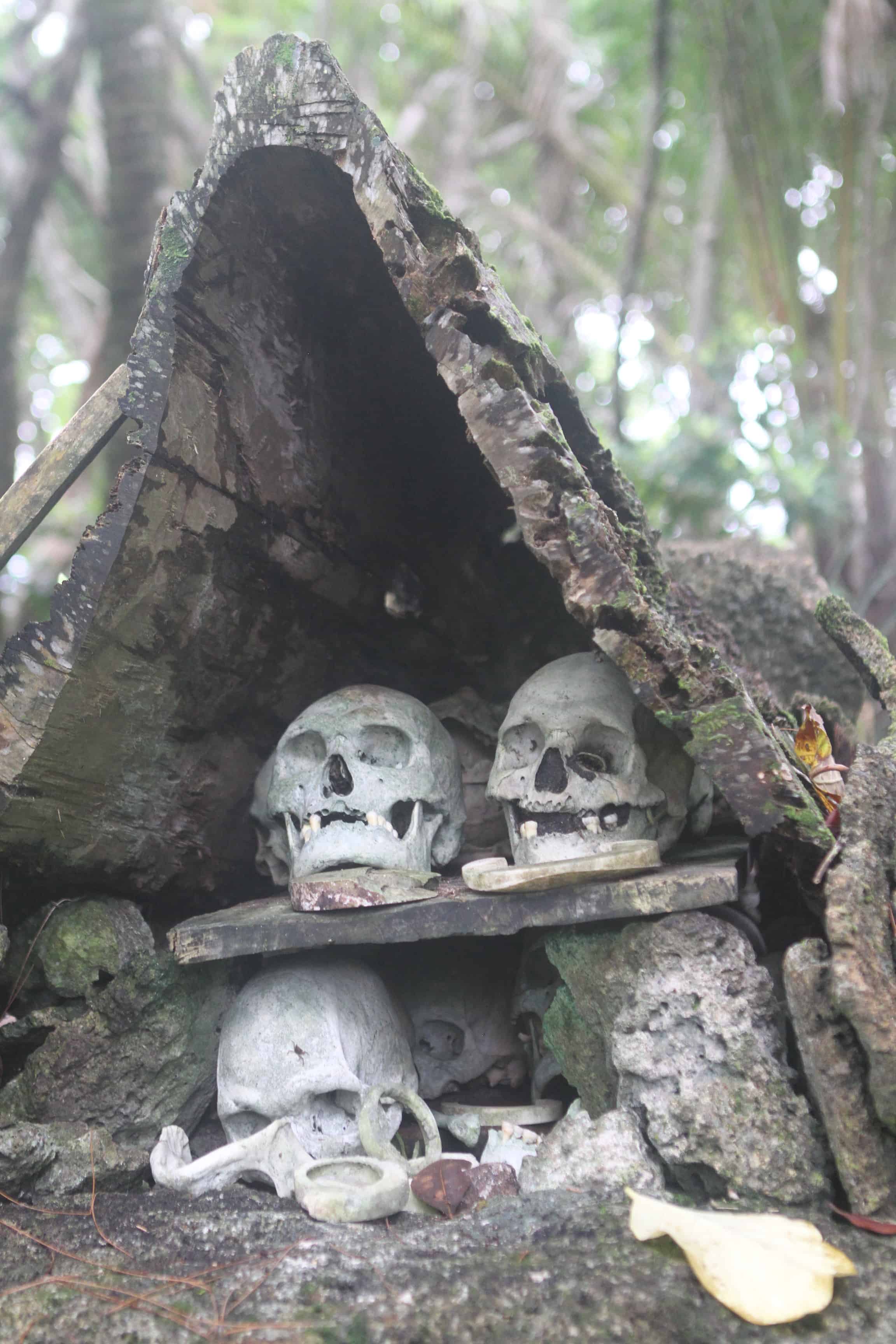
The skulls inside Skull Island
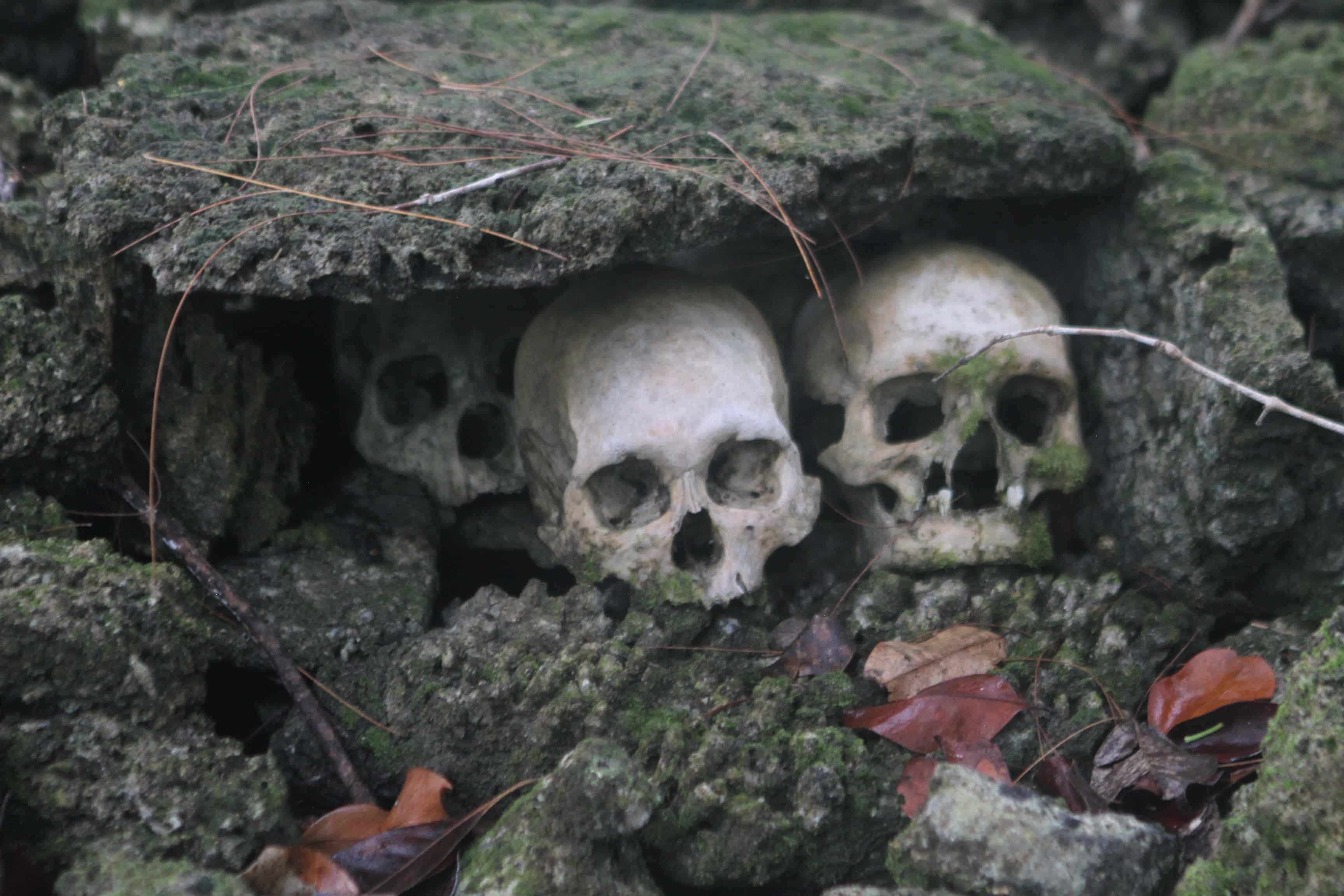
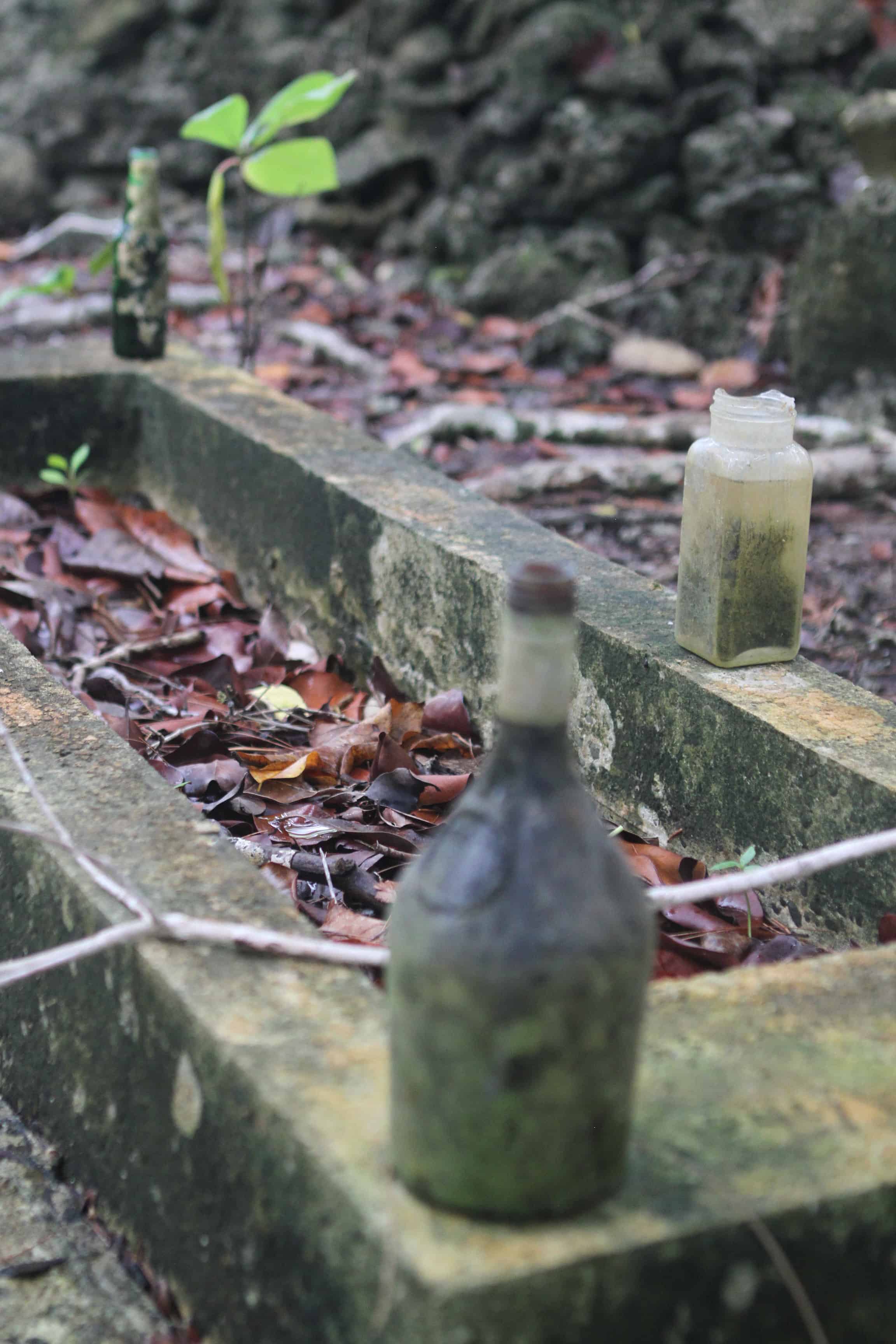
Apparently, Skull Island is one of the most sacred places on the Island of New Georgia. According to the Solomon Times, “many villages hold certain beliefs with sacred places, and that the life of visitors could be in grave danger if they visit sacred places without the knowledge of village chiefs. Village chiefs, according to beliefs would often have to make a traditional ritual before a visit to sacred places. This is according to a belief that when their traditional spirits are aware of the visitation they will not harm strange visitors.”
Connecting to the Spirits of the Past
Traveling to the island is an intense experience as it is, but imagine connecting directly to the spirits of the past? A caveat to note here for those who don’t know our story. Since Anthony is a spiritual trance medium, we had a very different experience than most will have when they visit Skull Island.
As we were about to enter the gate, our Spirit Team came through in force and explained what was happening each step of the way, guiding us how to stay protected and how to provide respect for the spirits who remain on the island. We learned a whole lot more than we expected.
Listen to the video at the bottom of this article to view and listen to our experience first hand. It was a fascinating encounter albeit an eerie one at times, although our loving Spirit Guides involved Silliun and as they spoke, while Ellison and I translated what was happening in real time.
After we made our way through the wooden gate, we ran into the salt water and saged ourselves before getting back on the boat — saging is always a good idea before and after you visit spiritual and sacred grounds — even cemeteries.
The locals here also think it’s a good idea too and since they don’t have sage lying around, Silliun picked up some Zovi leaves, which they traditionally use for cleansing and clearing — these can be found in abundance throughout the Solomon Islands. Silliun says, “you can use the Zovi tree for protection, especially the leaves.”
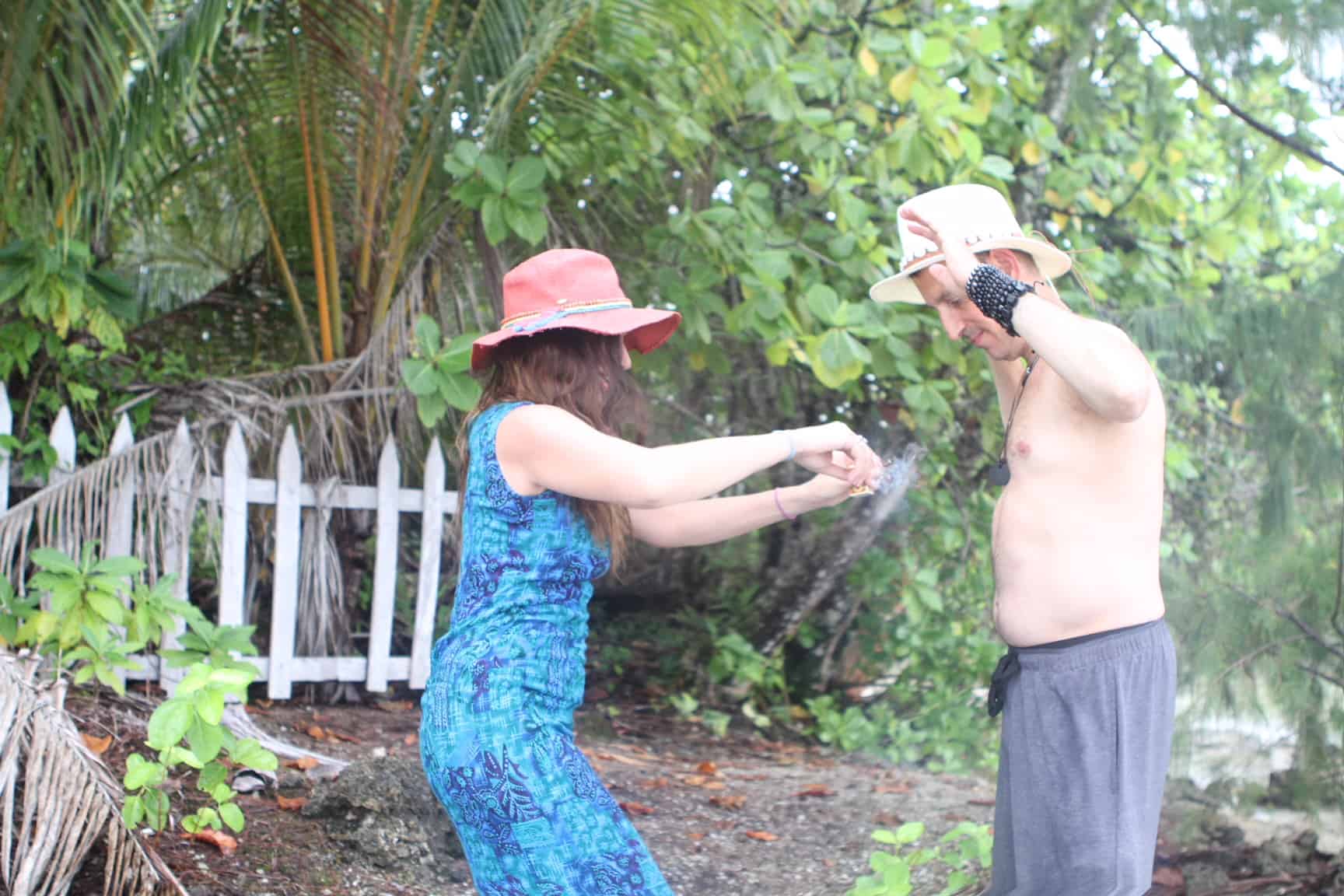
Saging after talking to the spirits of Skull Island
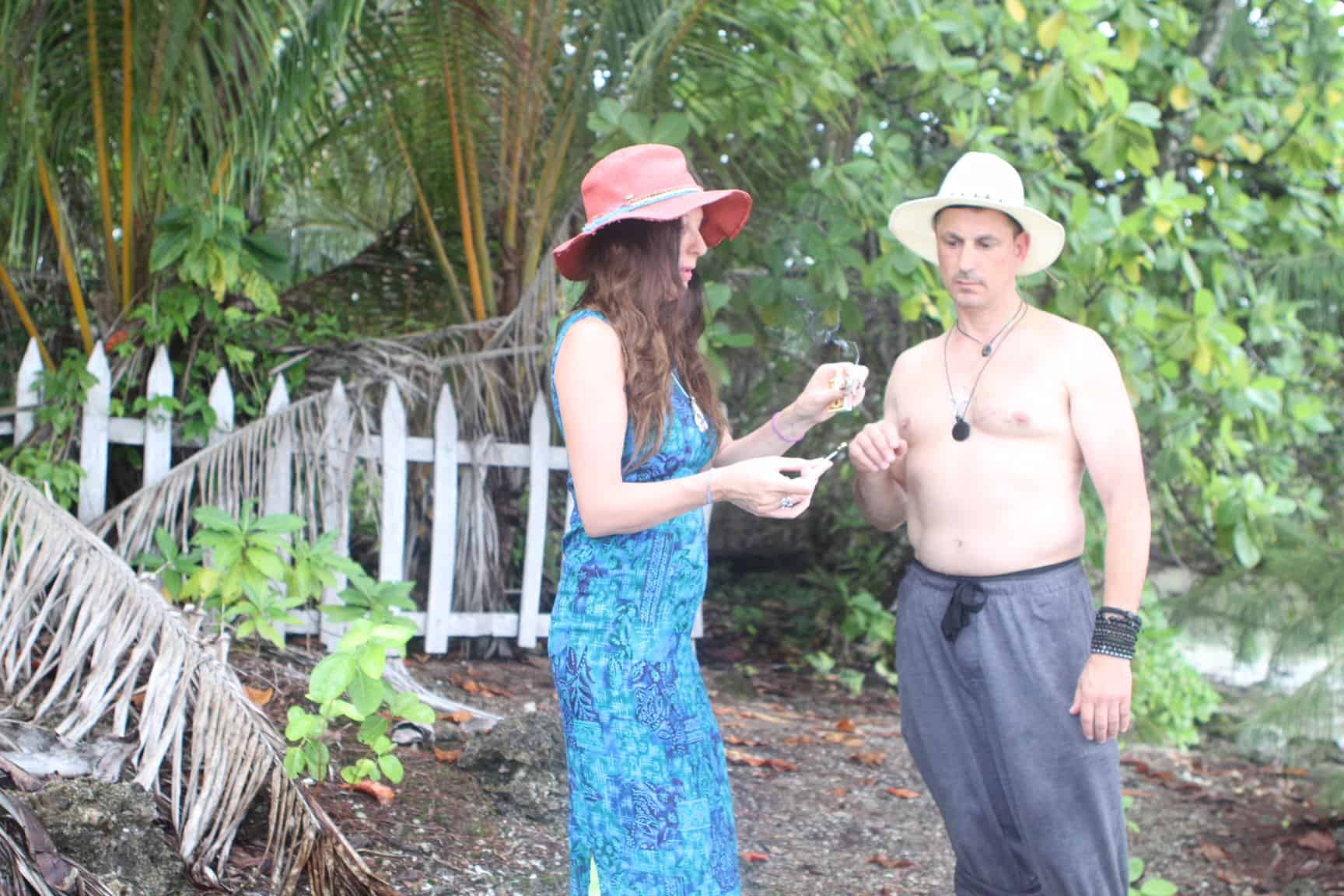
Sage for a l’il clearing afterwards

The water around the island is absolutely beautiful and there are plenty of places where you can snorkel and swim. There are also other lagoons and islands where you can stop for a swim or a picnic.
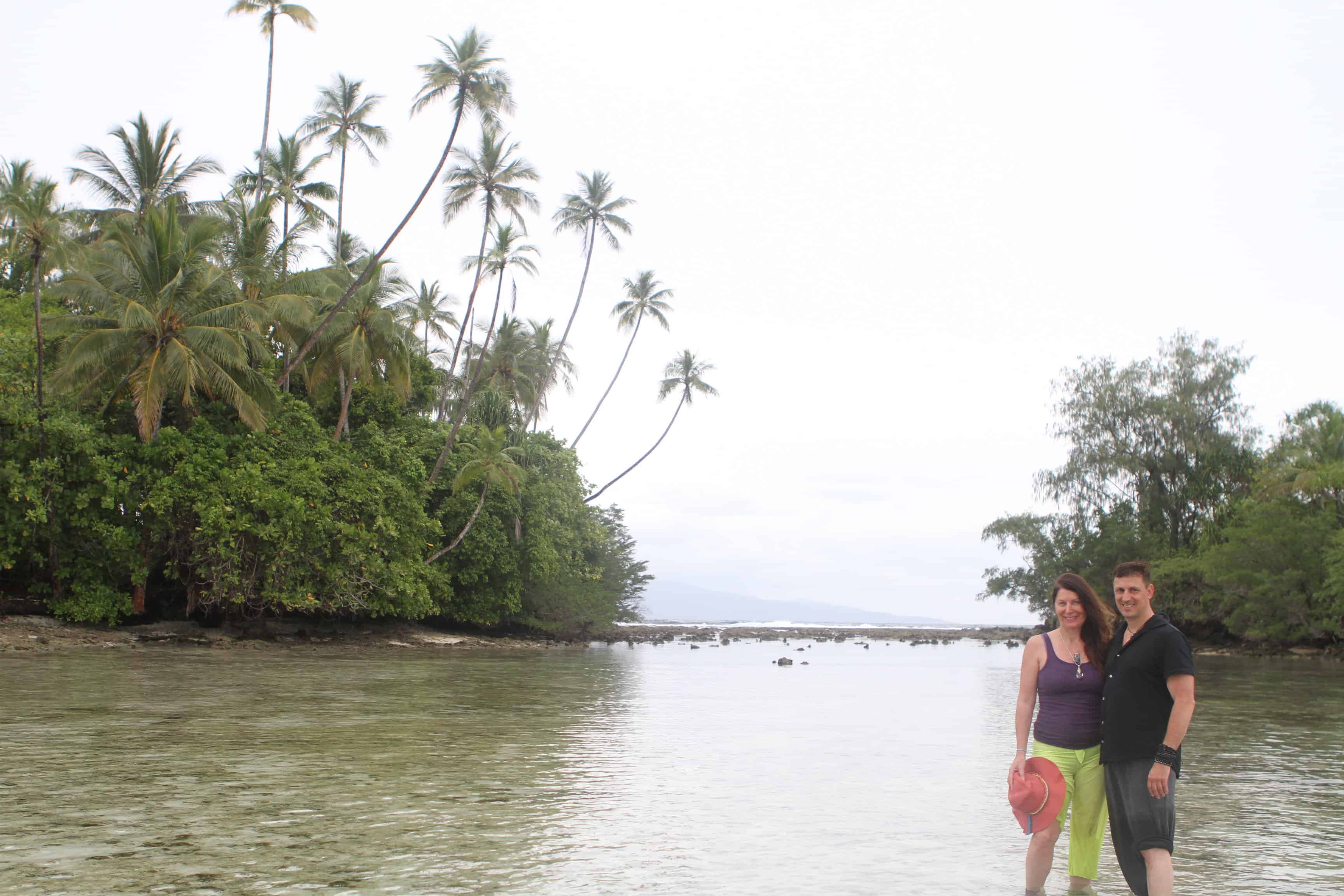
In the water after our experience with the spirits of Skull Island
Later that night, we talked to Silliun and Sunga who provided us with insight into the fierce headhunting history of local warriors of the time. We heard stories of the great grandfather David Vinoy whose job it was to take the heads off during a time. Imagine this ancestral past? Below is a photo of the founder of Skull Island, who is of course, no longer living.
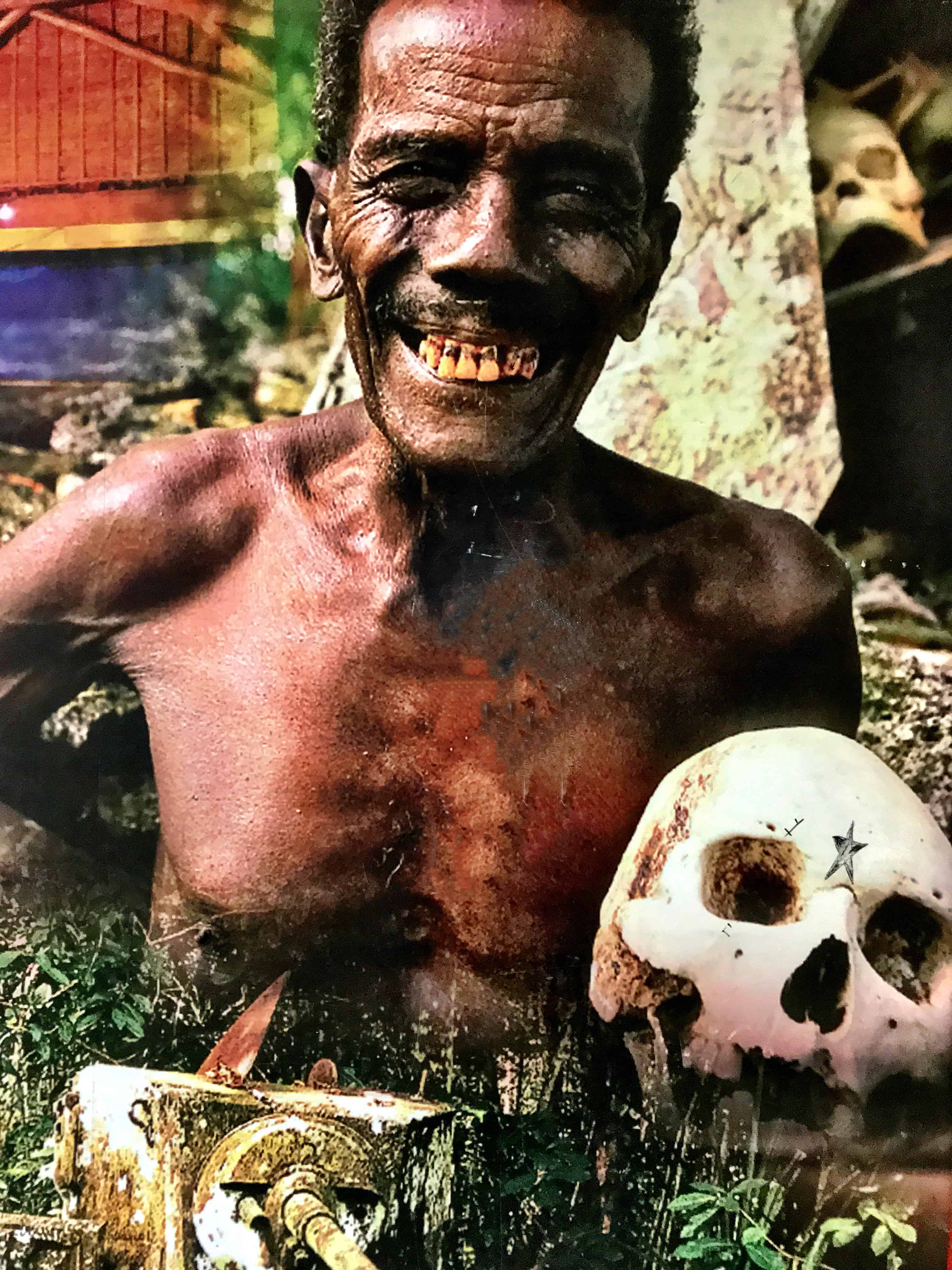
Founder of Skull Island
The next morning over breakfast, we had another chat with them and caught some of it on video (below).
_______________
Note: The trip to the Solomon Islands was made in conjunction with and the support of the Solomon Islands Tourism Board although all opinions expressed are entirely our own.

Renee Blodgett is the founder of We Blog the World. The site combines the magic of an online culture and travel magazine with a global blog network and has contributors from every continent in the world. Having lived in 10 countries and explored over 90, she is an avid traveler, and a lover, observer and participant in cultural diversity. She is also the founder of the Magdalene Collection, a jewelry line dedicated to women’s unsung voices and stories, and the award-winning author of the bestselling book Magdalene’s Journey
She is founder of Blue Soul Media and co-founder of Blue Soul Earth as well as the producer and host of the award-winning Blue Soul CHATS podcast, that bridges science, technology and spirituality. Renee also founded Magic Sauce Media, a new media services consultancy focused on viral marketing, social media, branding, events and PR. For over 20 years, she has helped companies from 12 countries get traction in the market. Known for her global and organic approach to product and corporate launches, Renee practices what she pitches and as an active user of social media, she helps clients navigate digital waters from around the world. Renee has been blogging for over 16 years and regularly writes on her personal blog Down the Avenue, Huffington Post, BlogHer, We Blog the World and other sites. She was ranked #12 Social Media Influencer by Forbes Magazine and is listed as a new media influencer and game changer on various sites and books on the new media revolution. In 2013, she was listed as the 6th most influential woman in social media by Forbes Magazine on a Top 20 List.
Her passion for art, storytelling and photography led to the launch of Magic Sauce Photography, which is a visual extension of her writing, the result of which has led to producing six photo books: Galapagos Islands, London, South Africa, Rome, Urbanization and Ecuador.
Renee is also the co-founder of Traveling Geeks, an initiative that brings entrepreneurs, thought leaders, bloggers, creators, curators and influencers to other countries to share and learn from peers, governments, corporations, and the general public in order to educate, share, evaluate, and promote innovative technologies.








